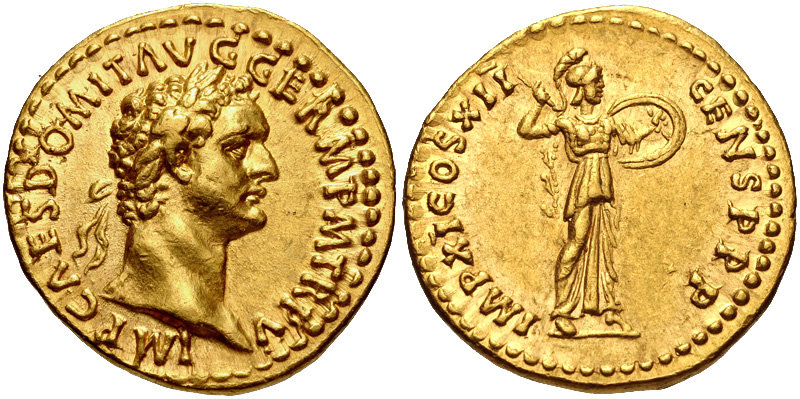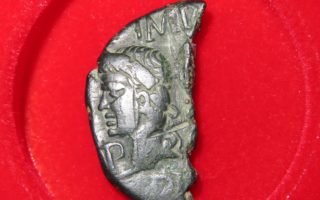Hi, today we will continue and finish our series of articles dedicated to Roman coins. So I spoke to you in the previous two articles about bronze coins and silver coins. If you haven’t read them, read them here: Roman coins in Bronze and Roman coins in Silver. It is therefore normal for me to make you an article presenting the Roman coins in gold. Here we will talk about the aureus, the solidus, the gold quinar, … So here are the Roman coins in gold. Have a good read.
The aureus
The aureus is arguably the most famous Roman gold coin. But it is also certainly the most sought-after type of coin in general. It appeared during the Second Punic War, in the 2nd century BC. At that time, Rome needed funding to create some. Therefore, a series of aurei (aureus in the plural) was created.
At the time, gold was not part of the coinage. Indeed, gold was stored as a public treasure by Rome and therefore no coin composed of this precious metal circulated. Consequently, following the Second Punic War, the aureus was abandoned. After that, in the 1st century BC, Sylla created a gold coinage to finance his campaign in Greece. He took the opportunity to use his image on coins and thus make propaganda. This reminds me of my article on the use of coins for communication. Click here to read The Coins : a way of communication . Later, Julius Caesar, during the Gallic War, used the public treasury as well as the spoils of his war to create new aurei. The strike resumes. At that time, this coin weighed just over 8 grams.
Thus, after Caesar’s assassination, various chiefs in office decided to mint their own coin. That is why Octavian Augustus made monetary reform. It was in 19 years that Augustus created a new monetary system. As a result, the aureus loses a little weight. Indeed, it now weighs just under 8 grams and is worth the equivalent of 25 deniers.
After the reign of Augustus, the aureus continued to be devalued. Indeed, it goes to just over 7.5 grams under Nero. The latter once again changes the weight of the aureus during its reign to 7.26 grams. As a result, as the aurei hit decades before weighed heavier and had a better percentage of gold, they are gradually removed from circulation and recast. Subsequently, the aureus evolved very little. Indeed, his weight was sometimes lowered sometimes re-raised and there were no major changes. However, events will quickly follow for the aureus.
It was in the 3rd AD that the decline of the latter began. Following a major coin crisis, the weight of the “golden denar” fell sharply from about 7.3 grams to just over 6.5 grams under Caracalla. Its decadence continues and it reaches 3.10 grams under Valerian. Subsequently, under Diocletian, aurei are less and less struck and become more of a safe haven than a coin. Thus, they are struck only on certain occasions, such as paying the military and only in small quantities.
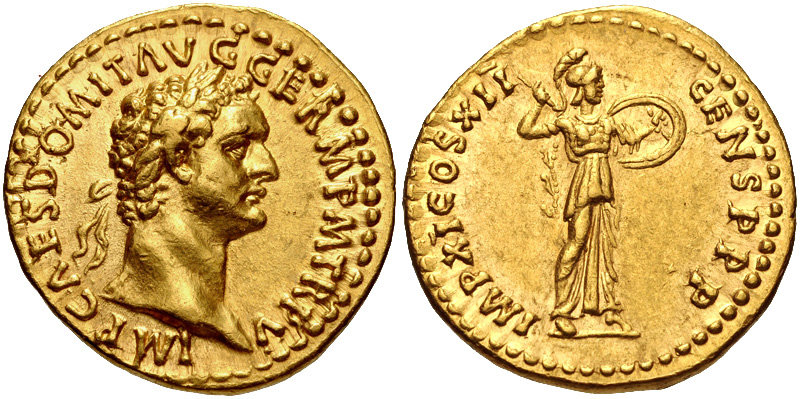
The solidus
Solidus is the coin that replaced the aureus. It was created under Constantine I with a weight of 4.5 grams of gold. Subsequently, it became the reference coin of the Roman Empire. (The aureus never was). The weight of this coin was very verified. In 363 AD, Julien instituted a weight verification system. His successors will do the same. In order to reinforce the importance of solidus, Valentinien I and Valens increased its gold percentage to 99%, 4% more than the previous one.
This coin held such an important place in the Empire that in the second half of the 4th century, the “soldes” (in french) (the word “solde” comes from the word “solidus”) of the legionnaires, the fines … were paid for in gold. Even when the Roman Empire split in two: the West Roman Empire and the East Roman Empire, it continued to flow from one party to the other. This coin remained relevant until the last sighs of the Empire. Indeed, his production even continued in 476 AD (when the Empire ended). This coin is certainly the most stable coin that the Roman Empire is ever known. As a result, its weight was never changed or little changed and the few variations in the coin were for the most part beneficial to the latter.
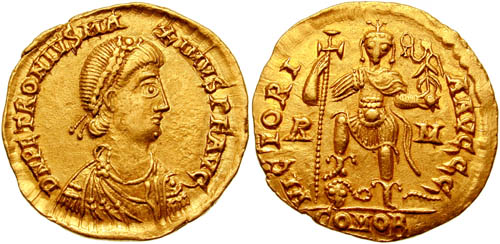
The tremissis
The tremissis is a small gold coin that arrived late in the Empire. This coin was created by Theodosius I at the end of the 4th century. It weighed 1.5 grams or half of a solidus. Therefore, it was worth 1/3 of solidus or 8 silicas. Like the solidus, it continued to be used after the fall of the Empire. Although it was not used for a long time during the Roman Empire, it did not change in weight or percentage of gold. It was therefore a very economically stable coin and was ultimately a miniature version of solidi.
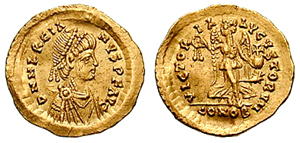
Semis
Gold semis is a coin that strongly resembles solidus. As the name suggests, it was worth half a solidus. As a result, it weighed about 2.25 grams. It was probably created by Constantine and was used until the end of the Roman Empire as were the solidi and tremissis.
The quinar
The gold quinar is just like the silver quinare a coin worth half of another coin. Indeed, the silver coin was worth half a denar while the gold coin was worth half an aureus. It was Augustus who created the golden quinar at the end of the 1st century BC and put him in the Roman monetary system. However, this coin is different from the others. Indeed, it was not struck by all the emperors but only by some. Moreover, the quinar did not appear to be “normal.” As a result, it was only a coin used on certain occasions. It was legal tender but was rarely spent by the people who had it. They certainly preferred to keep it as a kind of placement or souvenir. As a result, it was not minted in large quantities, making it a rare coin today.
So much for the Roman coins in gold and also for the series of articles devoted to coins according to their metal. I hope you enjoyed this article. Feel free to put what is your favorite type of Roman gold coin. Next week’s article on the environment of the manufacture and use of coins. See you next week!
Get my book Around the Roman Coin for free by clicking here

